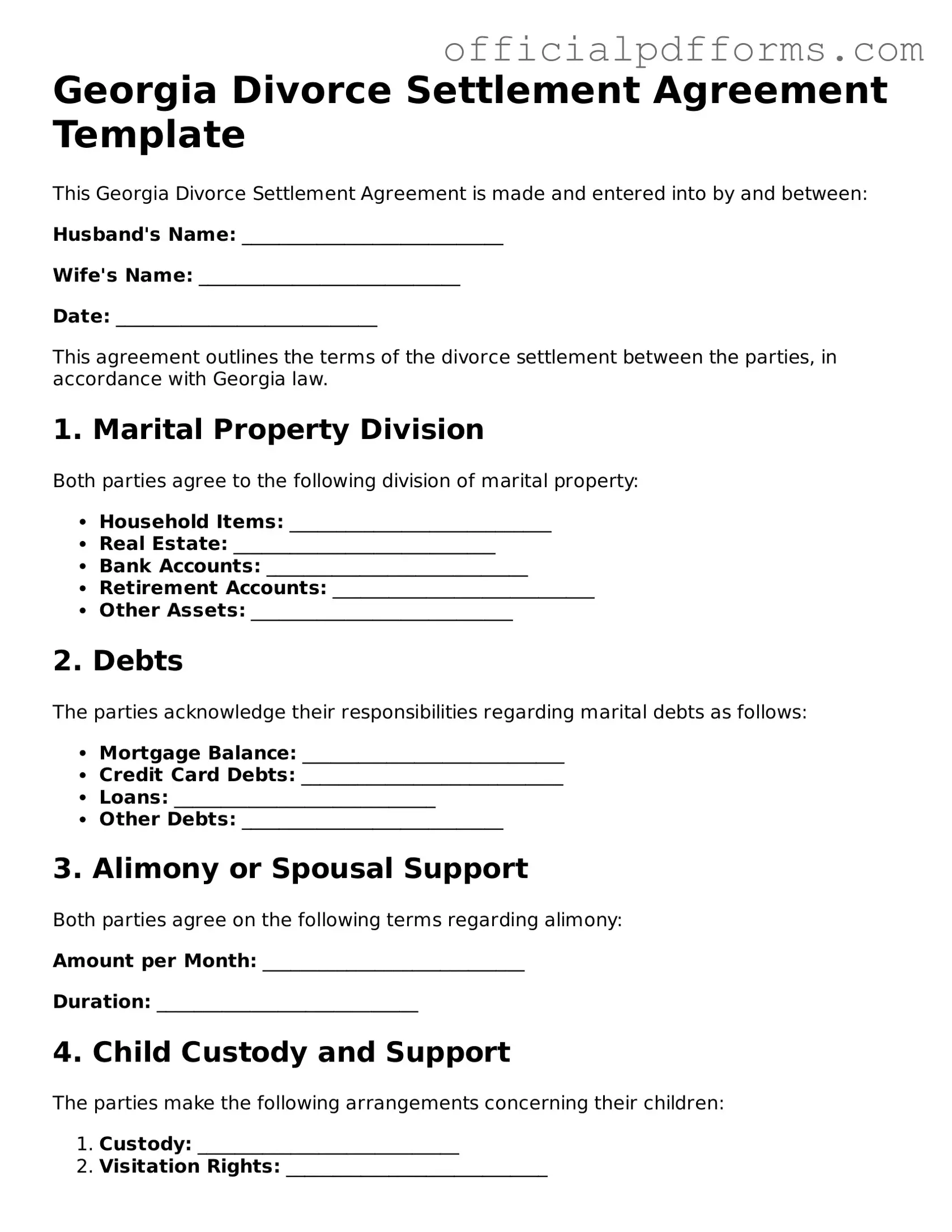What is a Georgia Divorce Settlement Agreement?
A Georgia Divorce Settlement Agreement is a legal document that outlines the terms of a divorce between two parties. It addresses key issues such as property division, child custody, visitation rights, and spousal support. This agreement serves to clarify each party's responsibilities and rights, reducing the likelihood of future disputes.
How do I create a Divorce Settlement Agreement in Georgia?
To create a Divorce Settlement Agreement in Georgia, follow these steps:
-
Gather all relevant financial documents, including income statements, tax returns, and asset valuations.
-
Discuss and negotiate terms with your spouse regarding property, debts, and child-related issues.
-
Draft the agreement, ensuring that all terms are clear and specific.
-
Review the document with legal counsel to ensure compliance with Georgia law.
-
Both parties must sign the agreement in front of a notary public.
Is a Divorce Settlement Agreement legally binding?
Yes, once signed by both parties and approved by the court, a Divorce Settlement Agreement is legally binding. This means that both parties are required to adhere to the terms outlined in the agreement. If one party fails to comply, the other can seek enforcement through the court.
What if my spouse and I cannot agree on the terms?
If you and your spouse cannot reach an agreement, you may need to consider mediation or other dispute resolution methods. Mediation involves a neutral third party who helps facilitate discussions and negotiations. If mediation fails, the case may proceed to court, where a judge will make the final decisions regarding the divorce terms.
Can I modify the Divorce Settlement Agreement later?
Yes, modifications to a Divorce Settlement Agreement can be made, but they require the consent of both parties. If circumstances change significantly—such as a job loss or a change in custody needs—either party can request a modification. It is advisable to document any changes formally and, if necessary, seek court approval.
What happens if one party violates the agreement?
If one party violates the terms of the Divorce Settlement Agreement, the other party can file a motion with the court to enforce the agreement. The court may order compliance or impose penalties on the violating party, which can include fines or changes to custody arrangements.
Divorce Settlement Agreement forms can be found online through various legal websites or the Georgia court system's official website. Additionally, local courthouses may provide forms and resources. It is important to ensure that any form used complies with Georgia laws and is tailored to your specific situation.
